Invisalign - Ann Arbor, MI
Get the Best Invisalign Deal
All-Inclusive $3,495
Most offices charge $5,500 - $7,000!
Available to new patients only.
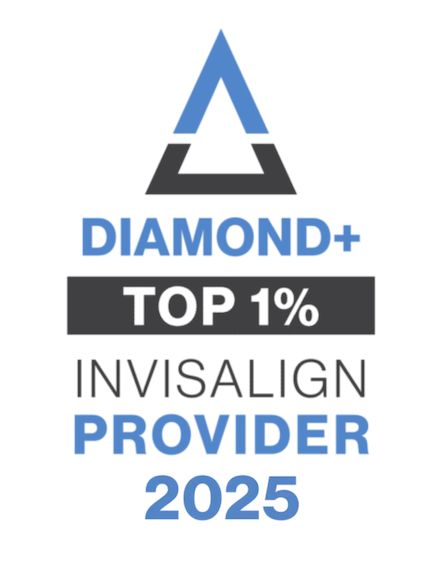
Invisalign uses a series of clear aligners to gradually and gently shift your teeth in the desired direction. In order to move forward with Invisalign treatment, you’ll first need to schedule a consultation with Dr. Olsen. Once he evaluates your mouth, he will discuss how you can achieve your dental goals with Invisalign, how long he expects it to take, and how much you can expect to spend on your treatment.
First, he’ll take 3D Scans of your teeth before sending them off to the lab. No more gooey impressions. There, they will create your customized aligner trays that you will use throughout your treatment. Each set of aligners will represent your smile at that particular stage of treatment. Once you receive your aligners, your dentist in Ann Arbor will instruct you on how long to wear them before switching to the next set. The typical daily wear is 20-22 hours, and the average length of wear for each set is one two weeks. You can expect the pressure of each new set to gently move your teeth into the desired position. Depending on your dental needs and severity, you can expect treatment to last anywhere between 6 to 18 months.

My experience with Dr. Olsen and my invisalign has been a good experience. The assistants can’t be any nicer. Trying to make you comfortable. Dr. Olsen has been a great dentist also to work with. Experienced with invisalign. Gentle and wanting to hear how you are doing with your invisalign but also how you are doing outside of the office. If I had someone ask, I would tell them without hesitation try this office.

I’ve been a patient this past year doing Invisalign and looking forward to completing the process by September. Dr Jim and his staff are wonderful with patients and very professional in all respects. I can’t wait for the final results! Definitely recommend his office.

Dr Olsen has always treated me with compassion and understanding. He and his support staff are excellent at what they do- making the often anxiety provoking need for dental care as positive of an experience as possible. Dr Olsen explains what is going on with my oral health in a way anyone can understand. Then he discusses all of the possible treatment options and prioritizes any work necessary. Dr Olsen does not pressure me into making big decisions and commitments, but he is respectful and understands that there are many competing priorities in life. I have always valued his thoughtfulness and kindness over the years. I trust Dr Olsen and highly recommend him to anyone in search of a quality dentist who is also a quality human being.

Just finished my Invisalign and am thrilled with my new smile! Dr. Olsen did a fantastic job, highly recommend.

Dr. Olsen is honest, kind and very professional. The clinic has the latest equipment and the staffs are friendly and skillful. I am very glad I have such a professional dentist and staffs who help me to keep my dental health. All my family members go to this place and we all are very satisfied with their excellent work.


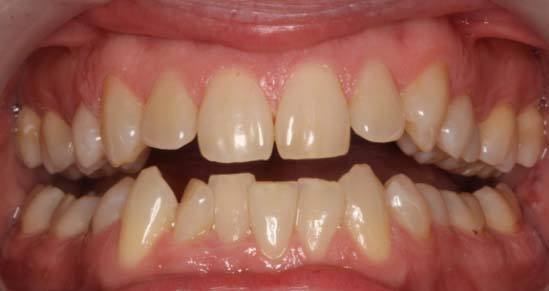
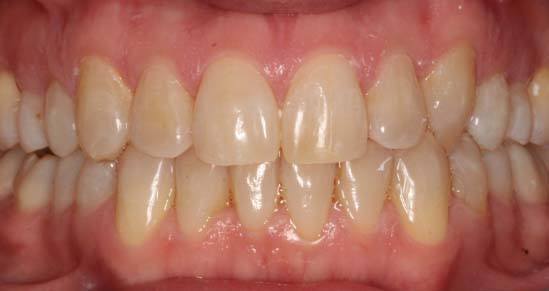

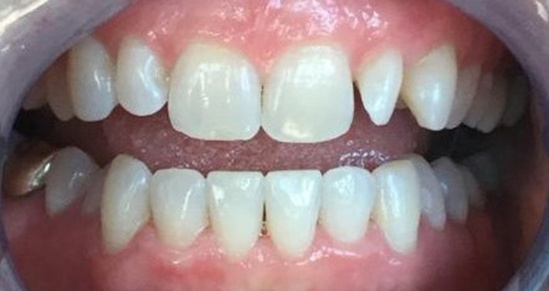
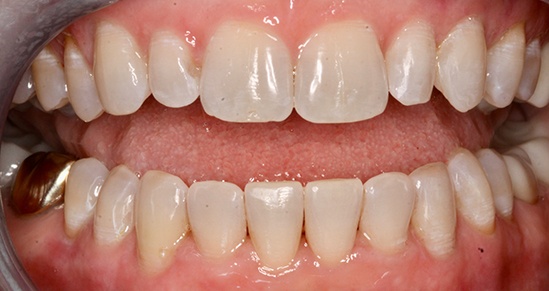

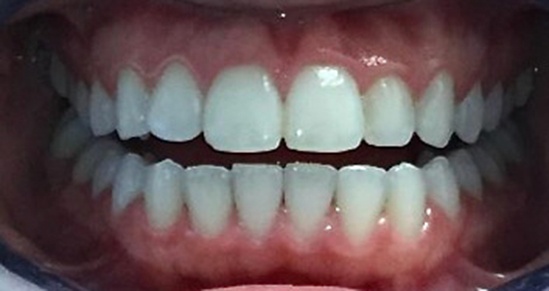
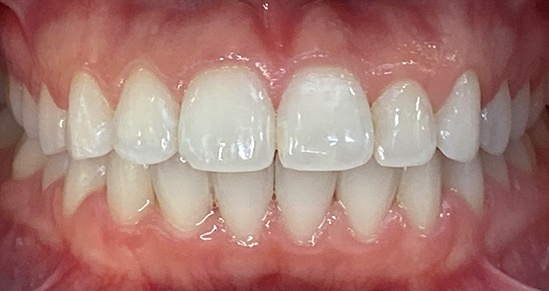

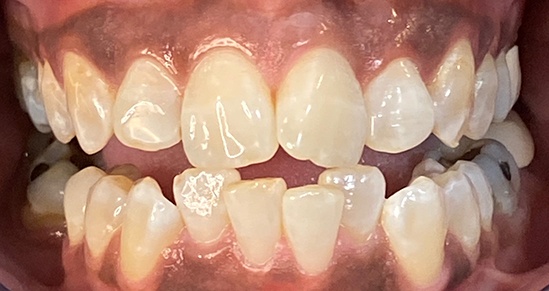
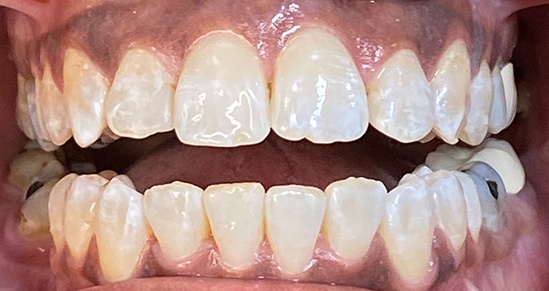

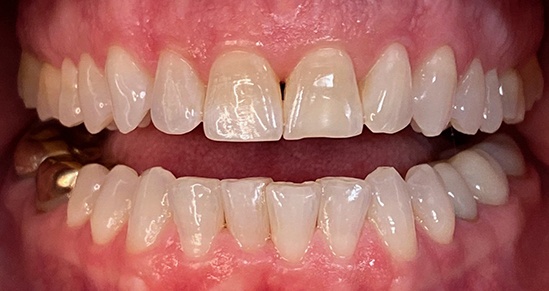
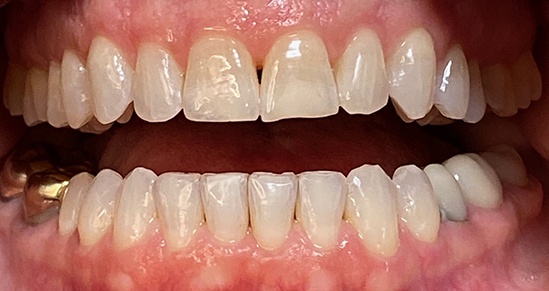

Nothing makes for a more confident smile than straight teeth. Unfortunately, crooked teeth are a fairly common problem, and even the slightest misalignment can keep you from wanting to express yourself with a big happy smile. Dr. Olsen has good news for those who want a straighter smile, though. Invisalign in Ann Arbor allows those with moderate to severe alignment issues to straighten their teeth without the look of traditional orthodontics.
In the past, traditional metal braces were the only option for people dealing with misaligned teeth. Anyone who wanted a straighter smile would have to endure a long process and a mouth full of metal wires. Because of modern technology and dental care evolution, we now have Invisalign invisible braces to help correct crooked and misaligned smiles.
Invisalign uses a series of clear aligners to gradually and gently shift your teeth in the desired direction. In order to move forward with Invisalign treatment, you’ll first need to schedule a consultation with Dr. Olsen. Once he evaluates your mouth, he will discuss how you can achieve your dental goals with Invisalign, how long he expects it to take, and how much you can expect to spend on your treatment.
First, he’ll take 3D Scans of your teeth before sending them off to the lab. No more gooey impressions. There, they will create your customized aligner trays that you will use throughout your treatment. Each set of aligners will represent your smile at that particular stage of treatment. Once you receive your aligners, your dentist in Ann Arbor will instruct you on how long to wear them before switching to the next set. The typical daily wear is 20-22 hours, and the average length of wear for each set is one two weeks. You can expect the pressure of each new set to gently move your teeth into the desired position. Depending on your dental needs and severity, you can expect treatment to last anywhere between 6 to 18 months.
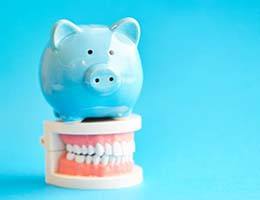
Many patients are eager to straighten their teeth in Ann Arbor, but they hesitate to contact us to schedule an Invisalign consultation because they are concerned about cost. That is totally understandable, but you should not automatically assume that this treatment is out of your financial reach. The cost of Invisalign varies from patient to patient, but most are surprised to find out how easy it is to fit into their budget. With a little planning and help from our friendly team, you may soon be on your way to a new smile.

In our office, the price of Invisalign is all-inclusive $3,459 for new patients compared to average Ann Arbor prices between $5,500-$7,000. However, there are factors that could make your out-of-pocket cost lower, including:

Our team is ready to help you afford Invisalign in Ann Arbor. That is why we go above and beyond to help patients maximize their insurance benefits. We will verify your coverage, file your claims for you, and do our best to answer any questions you have about how your policy applies to Invisalign.
If you would like to pay for your treatment over time, ask us about CareCredit financing. CareCredit offers a number of different payment plans, including ones that come with little or no interest. Plans with a longer term may require a monthly payment that easily fits into most patients’ budgets.

Invisalign is the top name in the clear braces industry for good reason. The company has a decades-long track record of providing great results for patients. The treatment utilizes the latest technology, and they devoted years to developing a special material, called Smart Track, to ensure that their aligners are as effective as possible. The vast majority of patients who invest in Invisalign agree that it is worth the price!
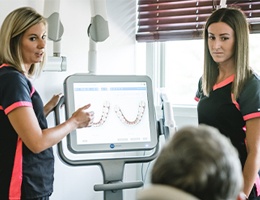
Are you curious if you’re a candidate for Invisalign? If so, the next step is simple: scheduling a consultation with our Ann Arbor dental team! In the meantime, you can keep reading to learn a few of the common orthodontic problems that clear aligners can address.
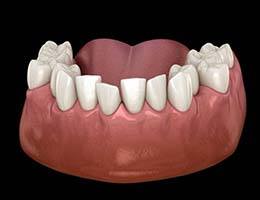
Do your teeth overlap? Good news: Invisalign braces are a great way to create more space between your teeth! With the clear aligners, we can carefully push your teeth into better positions. This will make your toothbrush and floss more effective (lowering your risk for tooth decay and gum disease) as well as improve the appearance of your smile.
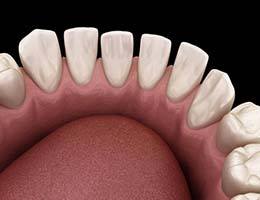
As a child, you may have liked the gap between your two front teeth. As an adult, you may feel like it has lost its charm, especially since there are aesthetic, health, and functional drawbacks. Thankfully, Invisalign can shift your teeth closer together, eliminating the extra space and improving the alignment of your bite in the process.
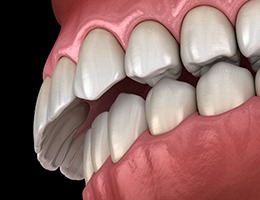
It’s normal for your top teeth to sit slightly in front of your bottom teeth. If they jut out significantly, however, then you may have trouble chewing properly and enunciating clearly. The good news is that patients with this orthodontic problem are often candidates for clear aligners! With a custom-made series of trays, we can improve the position of your teeth and your bite.
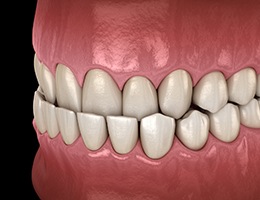
An underbite is the opposite problem: when your lower teeth sit in front of your top teeth. Although the aesthetic drawbacks are noteworthy, the functional drawbacks are significant as well. That’s why we strongly recommend scheduling a consultation with us to see if you’re a candidate for Invisalign. If you are, then we can address this bite problem, lessening your chances of developing TMJ disorder in the process.
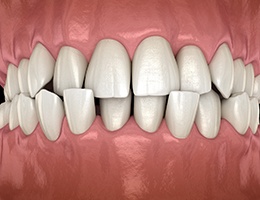
If some of your lower teeth jut out beyond your top teeth and some of your top teeth protrude beyond your lower teeth, then you have a crossbite. Like the other bite problems on this list, a crossbite can result in premature wear, jaw pain, and low self-esteem. Fortunately, rubber bands, buttons, and other orthodontic accessories can be added to your treatment plan so the position of your bite is improved as well.
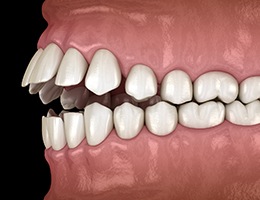
When you bite down, do your front top and bottom teeth meet evenly? What about your molars? If they don’t, then you may have an open bite. One of the biggest concerns with this bite problem is premature wear, including cracks and chips. To prevent that from happening, we need to align your bite, which we can often do with Invisalign clear aligners. The best way to find out if you’re a candidate for this discreet orthodontic treatment is by scheduling an appointment with us!

While traditional metal braces might be more effective at addressing severe orthodontic issues, they also come with their fair share of drawbacks. For instance, they are extremely visible in your smile, broadcasting the fact that you’re undergoing orthodontic treatment. Invisalign braces are the ideal solution if you’re looking to straighten your smile without the hassle and embarrassment of metal brackets and wires. Using clear, plastic aligners, Invisalign braces offer a faster, more flexible way to achieve beautiful, natural results. Read on to learn more about just some of the benefits our patients love about Invisalign!

On average, it takes 24 to 36 months for metal braces to fully straighten misaligned teeth. Invisalign, on the other hand, typically only takes between 12 and 18 months. If your teeth are only slightly misaligned, your treatment might even take as little as 6 months! Invisalign allows you to enjoy the benefits of having a straight smile much more quickly.
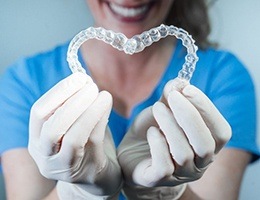
The metal brackets and wires of traditional braces are notorious for irritating the tongue, gums, lips, and the insides of the cheeks. They can create uncomfortable sores that last for several days. Invisalign’s clear aligners, however, were designed with your comfort in mind. Their plastic edges are as smooth as can be, so you can straighten teeth in Ann Arbor without experiencing any soft tissue irritation.

If you’ve known anyone who had metal braces at one point, then chances are you’ve heard them complain about having to get their braces adjusted. Every few weeks, patients with braces must see their orthodontist to have their wire tightened, a process which can make your mouth sore for the next few days.
With Invisalign, you still have to visit us every few weeks, but these appointments are much more comfortable and briefer. In most cases, all we’ll have to do is evaluate your progress, answer any questions you may have, and provide you with the next few sets of aligners in your treatment.

Every Invisalign aligner is designed to be completely transparent. Unless someone knows exactly what they’re looking for, they shouldn’t be able to discern that you’re even wearing the trays. If you’re an adult in the workforce, this can greatly help you maintain a professional appearance. After all, the last thing you want when you’re trying to get a promotion is to look like an awkward teenager. Plus, you’ll feel much more confident with the knowledge that no one can detect your aligners. That confidence will naturally transfer to your work performance and help you achieve more career success than you would have if you had chosen to wear metal braces.

Before you sign on the dotted line, do you want to learn a bit more about what life with Invisalign is actually like? If so, this next section is for you! Below, you’ll find helpful information on everything from how to track your wear time easily to how to clean your trays properly.
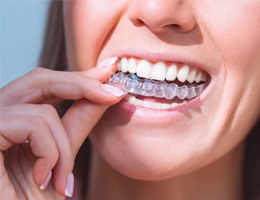
Although having removable aligners comes with several noteworthy benefits – including the freedom to eat whatever you’d like throughout your teeth-straightening journey – it also comes with some responsibilities. For example, you need to make a conscious effort to wear your aligners for 20-22 hours a day. The best thing to do is to track your wear time with the stopwatch on your phone, especially during the first few weeks when you’re developing your routine.
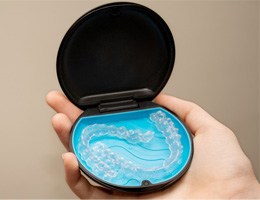
You may have heard that you need all sorts of oral hygiene products to keep your trays clean. That’s not the case! In fact, it’s quite the opposite since you only need two things: clean, lukewarm water and a soft-bristled toothbrush. If there comes a time when you need to wear your aligners for a bit longer than expected, you can always use the cleaning crystals that came in your welcome kit too – just dissolve them in some lukewarm water and allow your trays to soak in the mixture.

We touched on the fact that there aren’t any dietary restrictions with Invisalign above. It’s important that we clarify the importance of eating a well-balanced, nutrient-dense diet, however. This is important because any oral health problems that arise – from tooth decay to gum disease – will bring your teeth-straightening journey to a temporary stop. In short, keep starchy and sugary foods to a minimum and increase your intake of smile-friendly foods, like fruits and vegetables.

If one of your aligners has a hairline crack, then you may be able to continue wearing it (using the utmost care, of course). If, on the other hand, one of your trays is significantly damaged or has shattered into multiple pieces, your top priority should be calling our Ann Arbor dental team. That way, we can quickly determine whether a replacement needs to be made or if you can move onto the next set in the series a bit early.

Periodically throughout your orthodontic treatment you’ll need to come into our office so we can take new scans of your teeth. This is important because this gives us insight into whether your teeth are tracking or not. If they aren’t, then we will need to find a way to get you back on track with your treatment plan. If they are, then we will give you your next batch of aligners and schedule your next check-in appointment.

Understandably, you may still have some questions about Invisalign in Ann Arbor. Below, we answer some of the most common inquiries we receive about Invisalign. If you don’t find the information you’re looking for, please give us a call at (734) 996-0200 so we can personally satisfy your curiosity.
You might experience some discomfort during your treatment, especially when you switch to a new aligner. You can cope with the discomfort by taking Tylenol or ibuprofen, and sipping on cool water. You may also find it beneficial to switch to your new aligner at night so you can sleep through part of the adjustment period. If you ever experience significant pain during your treatment, it’s possible that there is a problem with one of your aligners. In such a case, give our team a call, and we’ll be happy to help you remedy the situation.
After you work your way through all of your aligners, your dentist in Ann Arbor will provide you with a retainer. It is important that you wear the retainer in order to prevent your teeth from drifting back out of place. At first, you’ll need to wear the retainer full-time. As time goes on, however, you will likely be able to graduate to wearing the retainer at night time.
Give our dental office a call, and we’ll help you figure out your next steps. In some cases, we might recommend that you go back to wearing a previous aligner until we can order a replacement for you. Or, we might suggest that you move on to the next aligner slightly early. Don’t try to force a damaged aligner onto your teeth; you might end up inadvertently damaging your teeth or gums.
Yes, you can! Although the aligners cover your teeth, you have to remove them before you eat. As a result, you’re still just as likely to get cavities during your Invisalign treatment. In reality, you may be at an even higher risk if you don’t abide by all of the “rules,” like brushing and flossing your teeth after each meal. Although this may seem time-consuming and inconvenient, it’s crucial, especially since even minor cases of tooth decay have the potential to put your treatment on hold.
Although there technically aren’t any dietary restrictions, there are a few tweaks you should make to your diet. For example, if you have a lot of attachments, eating crunchy foods (i.e., raw nuts, peanut brittle, hard pretzels) is not a good idea. Similarly, consuming sugar in excess isn’t recommended. And, of course, you should never eat anything while your trays are in.
You can – just make sure to remove your trays first! If you don’t, then your once-clear aligners will begin to look yellow. Plus, keeping them on while you drink coffee can trap any lingering residue against your teeth, increasing your risk of enamel erosion. That’s why we encourage patients to adopt “smile-friendly” habits when it comes to this caffeinated beverage, including using a straw.
At first, yes! One of the most common examples is patients with moderate to severe malocclusion. In cases like that, traditional braces are the better option. Additionally, Invisalign isn’t an immediate fit for patients who have tooth decay or gum disease. The good news is that we can easily add essential restorative treatments, like dental crowns, to your treatment plan, so you will be a candidate soon enough!
On average, Invisalign treatments are between 12 and 18 months. However, there are numerous factors that need to be considered in order to determine the length of yours. How complex is your case? How old are you? How many aligners do you need? Do you need to straighten one or both arches of teeth? Are any orthodontic accessories, like rubber bands, necessary? Don’t worry – we will determine the answers to all of these questions and more during your initial exam. That way, you have an estimate of both the cost and length of your treatment.
Many dental practices offer an all-inclusive Invisalign® package to make treatment simple and transparent, with no surprise costs along the way.
A comprehensive Invisalign® package typically includes:
Everything from your initial scan to your final aligned smile is bundled into one upfront price, allowing you to focus on achieving beautiful results without hidden fees.
Top-rated Invisalign® providers stand out through a combination of experience, patient care, and consistently positive feedback.
Choosing a highly rated Invisalign® provider helps ensure your treatment is smooth, effective, and guided by skilled professionals from start to finish.